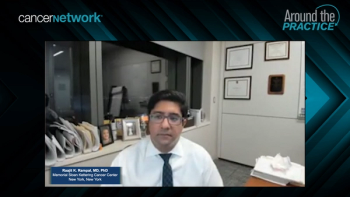
The role of signaling pathways, mutations, and alterations in the development of myelofibrosis (MF), and characteristics that distinguish primary MF from secondary MF.

Your AI-Trained Oncology Knowledge Connection!


The role of signaling pathways, mutations, and alterations in the development of myelofibrosis (MF), and characteristics that distinguish primary MF from secondary MF.

The most common symptoms that present in patients with newly diagnosed myelofibrosis and variables that factor into initial treatment decisions.

Criteria used to risk stratify and classify patients with newly diagnosed myelofibrosis and establish treatment paradigms.

Characteristics that contribute to treatment decisions for patients with newly diagnosed myelofibrosis

Best practices in determining eligibility and preparing patients with myelofibrosis for allogeneic stem cell transplantation.

Circumstances for which hydroxyurea, ruxolitinib, or other therapy may be selected to treat newly diagnosed myelofibrosis.

Review of criteria used to assess and plan treatment for a 67-year-old patient with primary myelofibrosis.

Monitoring patient response to frontline therapy for myelofibrosis, and circumstances for which a change in therapy may be appropriate.

Second-line therapies for myelofibrosis that are available or in the pipeline for use.

Second-line treatment considerations for a 75-year-old man with high-risk primary myelofibrosis who was previously treated with ruxolitinib.

Clinical pearls for planning and sequencing therapy for patients with myelofibrosis.

Responses to questions by community hematologists/oncologists regarding optimal ways to diagnose and manage patients with myelofibrosis.

John Mascarenhas, MD, hosts a panel of experts who discusses current strategies used to stratify risk patients with myelofibrosis and their preferences for sequencing therapy.